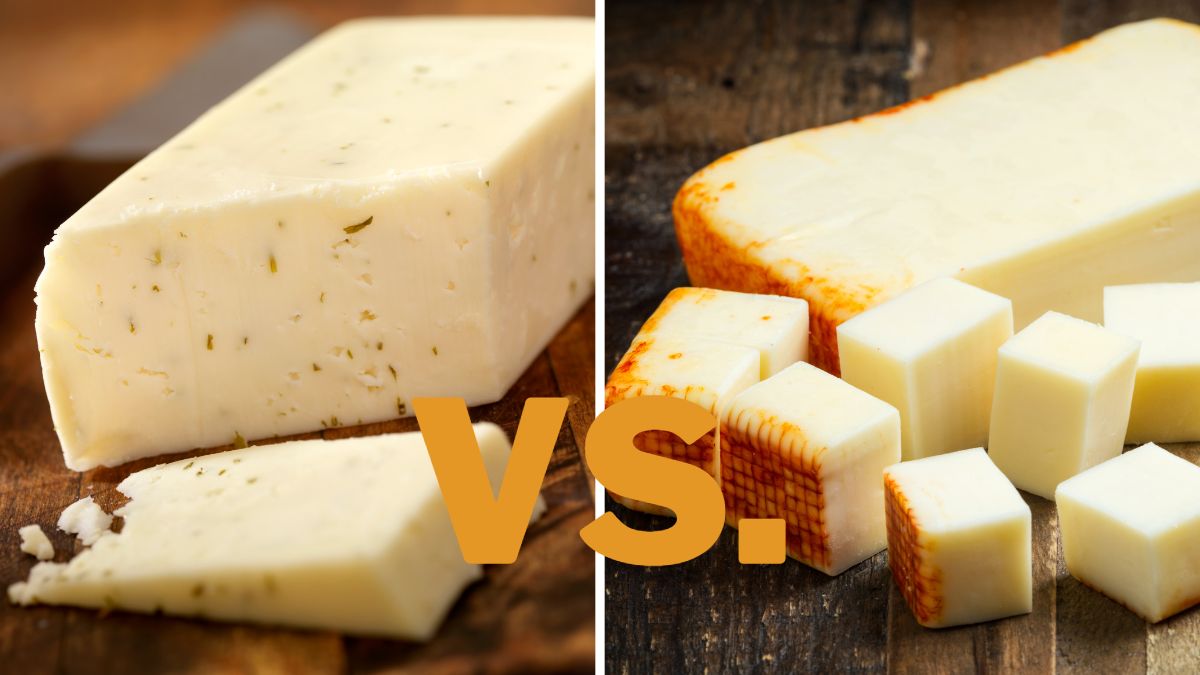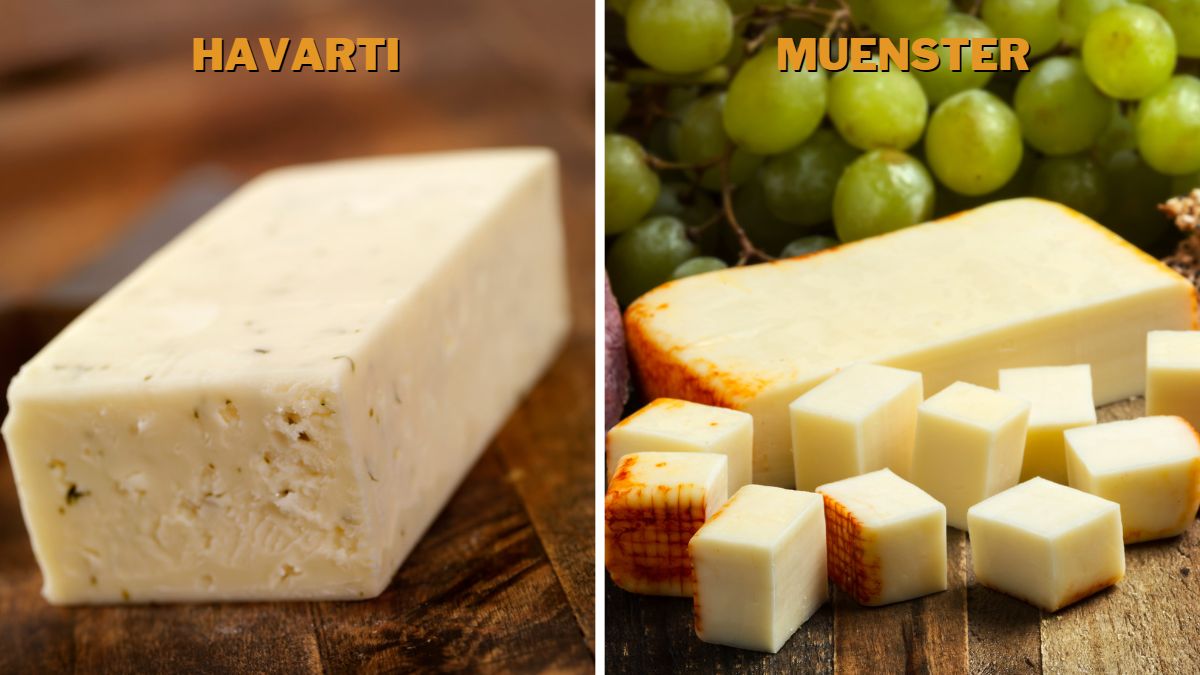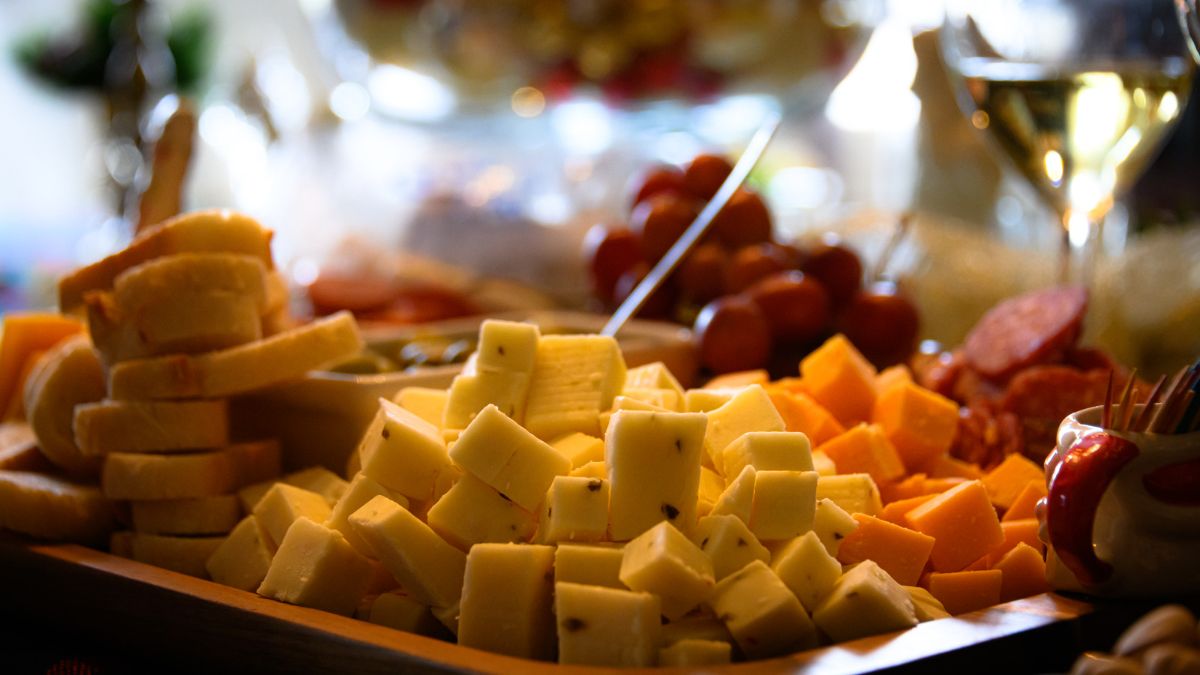Havarti vs. Muenster: Differences & Which Is Better

Havarti and Muenster are both very delicious types of cheese, and I often use them to substitute for one another. However, they are two different kinds of cheese bearing their markings, and they are used in recipes for their individual qualities. To find out why, I have put everything you need to know in one place — below. So, what are the differences between Havarti and Muenster, and which is better?
Havarti is a semi-hard Danish cheese with a resilient texture, nutty and buttery, and well-balanced flavor. It is made of cow’s milk and is a pale yellow color. Muenster is a French cheese with a smooth texture and pale yellow color, with an orange ring it gets from the seasoning. It is made from pasteurized cow’s milk.
Although they seem similar, and sometimes one can be used instead of the other, Havarti and Muenster are pretty different cheeses. In the following paragraphs, I will explain the differences between these two types of cheese and hopefully help you make the right decision about which to use.
Differences Between Havarti and Muenster
Havarti and Muenster are both exquisite kinds of cheese with many qualities and uses. They are both delicious and versatile, but they are far from the same. They differ in origin, taste, uses, textures, and melting properties.
In the sections below, you can read all about the differences between these two kinds of cheese.
Origin
Both Havarti and Muenster have interesting origin stories. Havarti was created in Denmark by accident. It is believed that it first appeared in the 1800s and was an accidental result of experimentation with washed curds.
Hanne Nielsen was the creator of the Havarti cheese. She was a cheesemaker who traveled through Europe learning new cheese-making techniques. When she saw the result of her experimentation, she decided to perfect the technique and officially bestow this cheese upon the world.
She named her invention Havarti as the name of her family’s farm, Havartigard.
On the other hand, Muenster originated in France in approximately the same period as Havarti, i.e., the 1800s. It was invented by monks who made it to save food and feed as many people as possible.
The name “Muenster” means “monastery,” further fortifying the theory that monks invented this cheese.
Taste and Texture
Muenster is a semi-soft French cheese with a smooth texture. It is initially mild and gentle, buttery, but almost neutral. However, as it ages, it becomes sharper and tangier. It has an orange ring around it, which is created by the seasoning they use to make it.
The best thing about Muenster cheese is that it gets different with age, so depending on how old it is, it tastes different than before. So, in a way, Muenster can be seen as several kinds of cheese, each sharper and tangier than its previous version.
Havarti is also a semi-soft cheese with a more resilient texture than Muenster. While Muenster could fall apart while cutting it, Havarti would stay stable. Taste-wise, Havarti is more expressive than Muenster.
Havarti cheese is very buttery and nutty, gentle, and soft. The taste ranges from buttery to sweet to very sweet, which is why this cheese is so famous nowadays, as you can use it in many ways. It usually ages for three months, but it never stops changing.
As the cheese ages, it becomes saltier and sharper, much like the Muenster, but not as tangy.

Nutrition
The nutritional values of Havarti and Muenster chees are almost the same. They both contain similar protein amounts, with the Havarti being slightly lower in protein than Muenster. Also, Havarti is marginally lower in calories.
Furthermore, they both contain vitamin B, riboflavin, folic acid, iron, and calcium. They also contain potassium, phosphorus, and magnesium. [1]
Uses
Havarti is a table cheese, meaning that it does great when served on a cheese plate with other cheeses. It also slices well and tends to soften when sitting at room temperature for some time. You can also use it in pasta, such as spaghetti, macaroni, lasagne, or other types of pasta.
It also does great when served with sandwiches, mainly grilled cheese, as it melts excellently.
Muenster is also an excellent cheese for cheese plates, but you need to cut it into cubes because it melts faster than Havarti and gets softer at room temperature. It melts great, so it is an excellent component of pasta dishes and a great ingredient for grilled cheese sandwiches.
Overall, Havarti and Muenster have very similar uses; they both work great, served as cold snacks, combined with other cheeses and deli meats, as well as in pasta dishes and grilled cheese sandwiches. This similarity in uses comes from the fact that both kinds of cheese are semi-hard, come from cow’s milk, and have a similar taste palette.

Melting Properties
Their melting properties make these cheeses so popular and widely used. They both melt wonderfully and are frequent stars of my pasta dishes, grilled cheese sandwiches, pizzas, or anywhere else where you need melted cheese.
When melted, both Havarti and Muenster become very elastic, fine, and even more delicious than they are cold. They make very good dipping cheese, as well as spreading cheese. They melt very easily, so you don’t have to worry too much about the process, as it takes care of itself.
However, each of these cheeses has its own melting mechanism. Muenster cheese needs a double boiler to melt properly. Moreover, you need to cut it into cubes because if you cut it in stripes or grate it, it will melt and stick.
Havarti melts in a pan and is far less demanding than Muenster. All you need to do is cut the cheese and let it melt in a non-stick pan. This is why I prefer to use it when I need melted cheese.
Both of these require low melting temperatures and constant stirring, as they will stick if melted at high temperatures without stirring.
Which Is Better, Havarti or Muenster?
Both Havarti and Muenster are exceptional. Both are delicious, versatile, and of very high quality. Saying that one is better than the other wouldn’t be right, as they are both great in their respectful domains.
Moreover, these two are very similar cheeses and, therefore, similarly used. The only noticeable difference between these two kinds of cheese is the flavor, which is slightly tangier in the Muenster and slightly saltier in the Havarti.
As they age, they both become sharper, and while they are young, they are both mild, buttery, nutty, and almost neutral. If you like more tang in your dish, you should choose Muenster, and if you like your dishes saltier, Havarti should be your choice.
This is why I usually use Muenster in blander dishes, while I like to use Havarti for its melting properties. How about you? Tell me all about your cheese adventures in the comments below!
